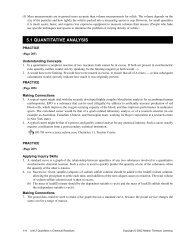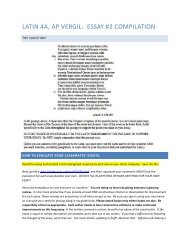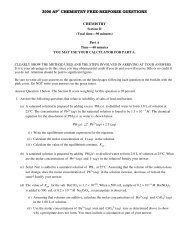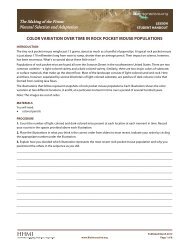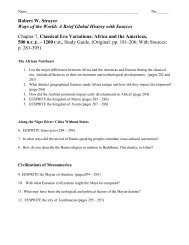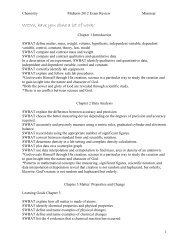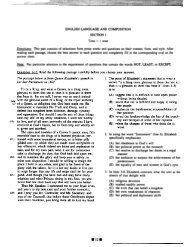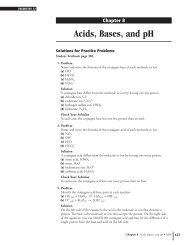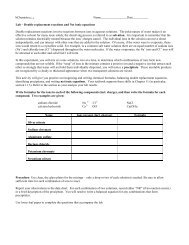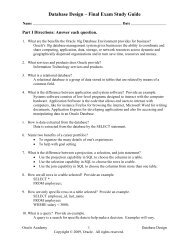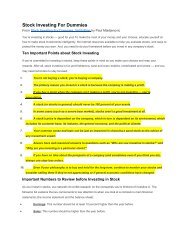You also want an ePaper? Increase the reach of your titles
YUMPU automatically turns print PDFs into web optimized ePapers that Google loves.
a. Mg > Be > Ca > K > Cs<br />
b. Be > Mg > Ca > K > Cs<br />
c. Cs > K > Ca > Be > Mg<br />
d. Ca > Mg > Be > Cs > K<br />
e. Ca > Mg > Be > K > Cs<br />
____ 153. Arrange the following elements in order of increasing values of electron affinity, i.e., from most negative to<br />
least negative. (Note: None of these elements is an exception to the general trends of electron affinities.)<br />
Cl, Se, S, Cs, Rb, Te<br />
a. Cl < S < Se < Rb < Te < Cs<br />
b. Cl > Te > Se > S > Rb > Cs<br />
c. Cl > Se > S > Te > Rb > Cs<br />
d. Cl < S < Se < Te < Cs < Rb<br />
e. Cl < S < Se < Te < Rb < Cs<br />
____ 154. Which ion has the smallest radius?<br />
a. As 3-<br />
b. Se 2-<br />
c. Br -<br />
d. Rb +<br />
e. Sr 2+<br />
____ 155. Which element has the lowest electronegativity?<br />
a. Mg<br />
b. Na<br />
c. Rb<br />
d. Y<br />
e. Sc<br />
____ 156. Which comparison of electronegativities is not correct?<br />
a. Br > Se<br />
b. K > Mg<br />
c. O > S<br />
d. N > Be<br />
e. I > Ba<br />
____ 157. Which of the following responses lists only the ionic hydrides?<br />
I. LiH<br />
II. B2H6<br />
III. GeH4<br />
IV. HCl<br />
V. BaH2<br />
a. I<br />
b. I, V<br />
c. II, III<br />
d. II, III, IV<br />
e. I, II, V




